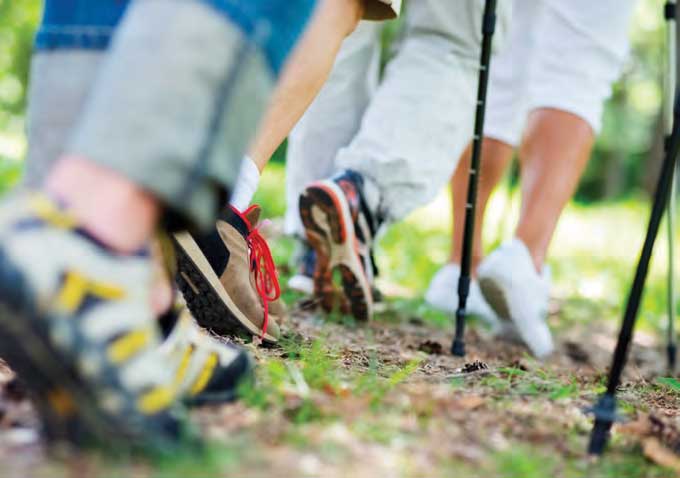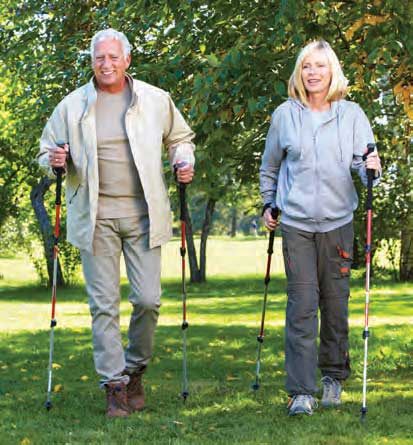
What’s not to like about walking? It’s free. It’s easy to do, and it’s easy on the joints. And there’s no question that walking is good for you. Walking is an aerobic exercise; a University of Tennessee study found that women who walked had less body fat than those who didn’t walk. It also lowers the risk of blood clots, since the calf acts as a venous pump, reducing the load on the heart. Walking is good for you in other ways as well.
- Walking improves circulation. It also wards off heart disease, brings up the heart rate, lowers blood pressure and strengthens the heart. Studies at the University of Colorado at Boulder and the University of Tennessee found that post-menopausal women who walked just one to two miles a day lowered blood pressure by nearly 11 points in 24 weeks. Women who walked 30 minutes a day reduced their risk of stroke by 20 percent.
- Walking shores up your bones. It can stop the loss of bone mass for those with osteoporosis, according to Michael A. Schwartz, MD, of Plancher Orthopedics & Sports Medicine in New York. In fact, a study of postmenopausal women found that 30 minutes of walking each day reduced their risk of hip fractures by 40 percent.
- Walking lightens mood. A California State University study showed that the more steps people took during the day, the better their moods were. Why? Walking releases natural painkilling endorphins to the body – one of the emotional benefits of exercise.
- Walking can lead to weight loss. A brisk 30-minute walk burns 200 calories. Over time, calories burned can lead to pounds dropped.
- Walking strengthens muscles. It tones your leg and abdominal muscles – and even arm muscles if you pump them as you walk. This increases your range of motion, shifting the pressure and weight from your joints and muscles – which are meant to handle weight – helping to lessen arthritis pain.
- Walking improves sleep. A study from the Fred Hutchinson Cancer Research Center in Seattle found that women, ages 50 to 75, who took one-hour morning walks, were more likely to relieve insomnia than women who didn’t walk.

- Walking supports your joints. The majority of joint cartilage has no direct blood supply. It gets its nutrition from synovial or joint fluid that circulates as we move. Impact that comes from movement or compression, such as walking, “squishes” the cartilage, bringing oxygen and nutrients into the area. If you don’t walk, joints are deprived of life-giving fluid, which can speed deterioration.
- Walking improves your breath. When walking, your breathing rate increases, causing oxygen to travel faster through bloodstream, helping to eliminate waste products and improve your energy level and the ability to heal.
- Walking slows mental decline. A study of 6,000 women, ages 65 and older, performed by researchers at the University of California, found that age-related memory decline was lower in those who walked more. The women walking 2.5 miles per day had a 17-percent decline in memory, as opposed to a 25-percent decline in women who walked less than a half-mile per week.
- Walking helps you do more, longer. Aerobic walking and resistance exercise programs may reduce the incidence of disability in the activities of daily living of people who are older than 65 and have symptomatic OA, shows a study published in the Journal of Clinical Outcomes Management.





 © 2025 Kirby Pines LifeCare Community. All Rights Reserved |
© 2025 Kirby Pines LifeCare Community. All Rights Reserved | 